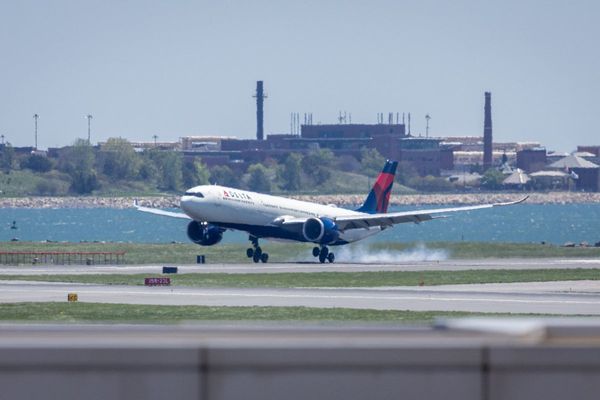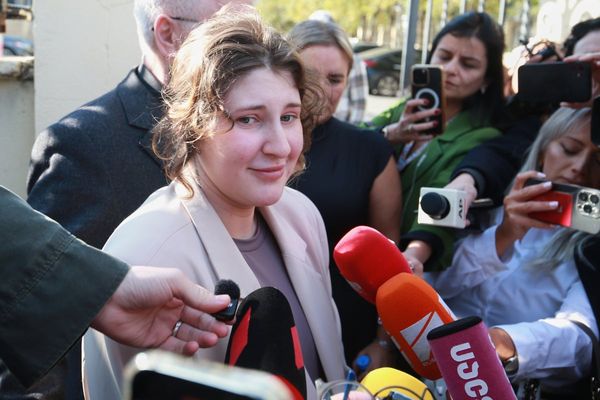
The use of lethal force by SAS soldiers who shot dead four members of the IRA in 1992 in an ambush in County Tyrone was not justified or reasonable, a judge at an inquest has ruled.
The victims’ families welcomed the ruling and said they would consider criminal prosecutions against the soldiers. They also called for the repeal of the controversial Legacy Act, which offers immunity for Troubles-era crimes.
Northern Ireland’s presiding coroner, Mr Justice Michael Humphreys, found that the soldiers had lied by saying there was a gun battle and they were attacking in self-defence, and that state agencies had perpetuated this falsehood.
Four Provisional IRA members – Kevin Barry O’Donnell, 21, Sean O’Farrell, 23, Peter Clancy, 19, and Patrick Vincent, 20 – were shot dead by the soldiers minutes after they had carried out a gun attack on Coalisland Royal Ulster Constabulary station.
The special forces opened fire as the men arrived at St Patrick’s church car park, in Clonoe, in a stolen lorry they had used in the police station attack. The SAS unit had been waiting behind a hedgerow for the gang to arrive after the security forces received intelligence that they would travel to the church, the inquest heard.
The soldiers then fired up to 570 rounds at the lorry without warning.
In statements given after the killings, the soldiers claimed there had been a gun battle and they had opened fire to protect themselves and colleagues.
Humphreys, who is also a high court judge, said these statements were untrue. He found that the IRA members were attempting to get out of the lorry and run away and they could not have posed a threat.
O’Donnell was shot in the back while attempting to flee and then again in the face while lying incapacitated on the ground.
Humphreys rejected claims by Soldiers F and H that they had an honest belief they needed to use force.
Clancy was shot when he attempted to run away and was then repeatedly shot in a crouched or kneeling position on the ground, the inquest found.
Vincent was shot seated in the cab of the lorry and then again when lying incapacitated across the seat of the lorry through its open doors.
O’Farrell was shot in the back while running away and then in the face while lying on the ground incapacitated.
Humphreys noted there was no attempt to arrest the four men, including after they were wounded in the ambush.
He also criticised state agencies, including the Ministry of Defence and government ministers, after they “perpetuated falsehoods” about the killings.
He cited an MoD document that described the ambush as “an excellent security forces success”.
The judge said these falsehoods and a lack of challenge by the authorities had thwarted accountability for the incident. He said: “The reasons for putting forward such false justifications for the actions of the soldiers are obvious. This, coupled with any lack of proper challenge of their accounts by the Royal Ulster Constabulary (RUC) investigators, ensured there would be no actual accountability.”
He noted that the media falsely reported that there had been a gunfight based on briefings from the authorities. Humphreys said: “No steps were taken to rectify this and ensure that the public were made aware of a true account of events.”
Speaking outside the court, Vincent’s sister Marian said the ruling gave “dignity back” to all four men. She added: “We’re delighted with the result, but we are also very aware of the huge expense to us as families. I don’t see how 514 bullets were ever warranted, especially if there could have been arrests.”
Niall Murphy, a lawyer for the families, said he would “carefully consider” the verdict with a view to prosecuting the soldiers.
He said: “Whereas truth has been excavated and published today, justice has not. Today’s verdict is the reason the Tory government bought in the Legacy Act. It was conceived and legislated for to ensure that truths could no longer be published. That is why it is so vital that the Legacy Act be repealed in its totality.”
Murphy also said the verdict had “ridiculed the lies that were told after these murders”. He added: “Those lies have been confounded and corrected today, and the vilification that these families have had to tolerate in the 33 years since can now be lifted from them.”
Sinn Féin echoed the call for the Legacy Act to be repealed – something Keir Starmer has promised.
Cathal Mallaghan, the MP for Mid Ulster, said: “These findings lay bare the rationale behind the British government’s determination to subsume all inquests within the ICRIR [Independent Commission for Reconciliation and Information Recovery], whereby the British secretary of state would decide what findings or information would be released to families via a vetted report.”
• The caption to the picture accompanying this article was amended on 7 February 2025. An earlier version referred to a “shootout” at the church, which as the article reports was a claim found by the judge to be untrue.







